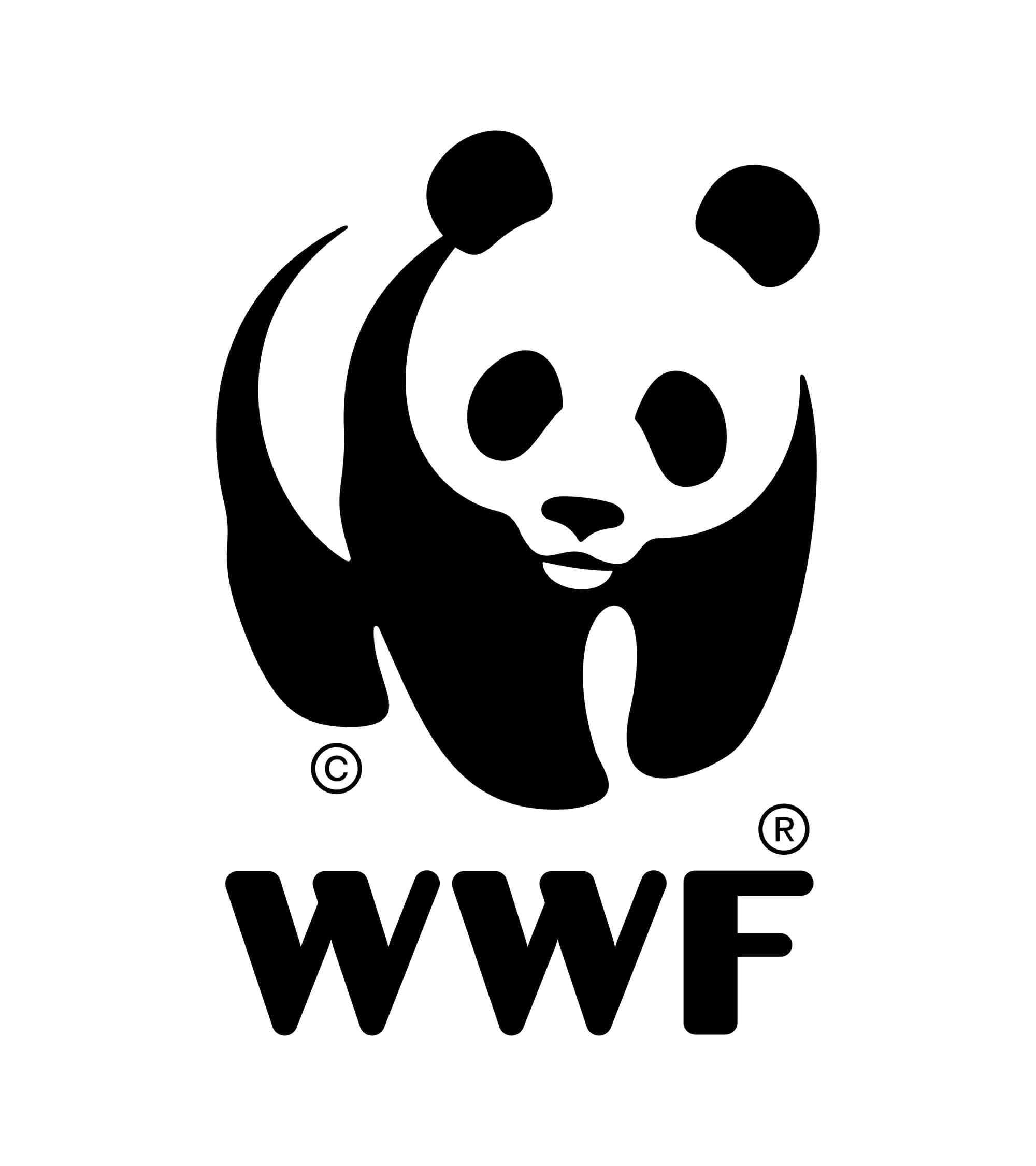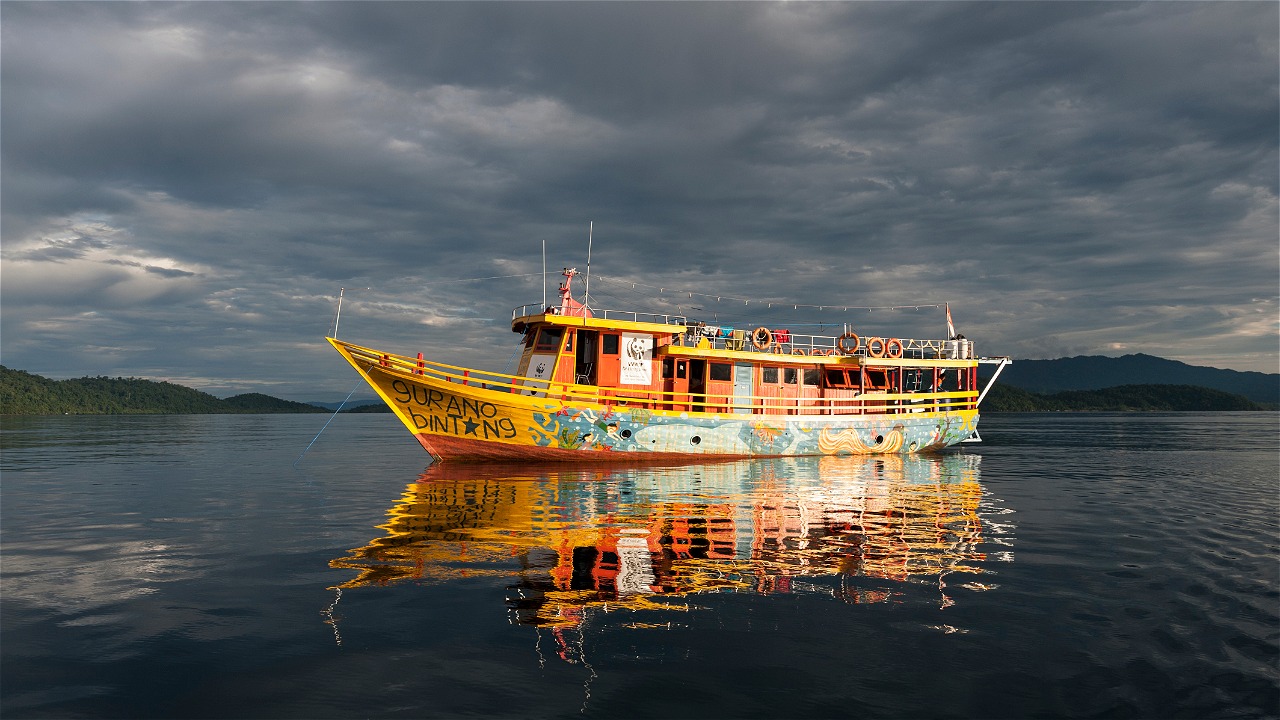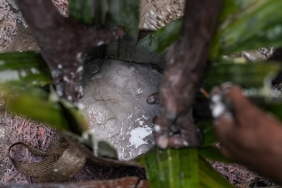THE LAUNCHING OF GURANO BINTANG BOAT AND COLLABORATIVE MANAGEMENT IN TELUK CENDERAWASIH
For further information, contact:
• Beny A Noor, Teluk Cenderawasih Program Leader, WWF-ID, +62 811 484 972, bnoor@wwf.or.id
• Dewi Satriani, Marine Program Communication Coordinator, WWF-ID, +62 811 910 970, dsatriani@wwf.or.id
Wasior, 17/02/2012 – The District Administration of Teluk Wondama in West Papua Province together with WWF and the Office of Teluk Cenderawasih National Park (BB TNTC) today (17/02) sign a Memorandum of Understanding to optimize the management of Teluk Cenderawasih National Park. The Memorandum is signed by Drs. Alberth H. Torey, MM, the Head of Teluk Wondama District; Ir. Djati Witjaksono Hadi, M.Si, the Head of Teluk Cenderawasih National Park Office; and Drs. Benja V. Mambai, M.Si, the Director of Sahul-Papua Region, WWF Indonesia.
Teluk Cenderawasih National Park has an area of 1,453,500 hectares and has been declared as national park by the Forestry Minister Decree Number: 8009/Menhut-II/ 2002 in 2002. Teluk Cenderawasih National Park has more than 500 coral reef species, 836 fish species, 16 sea mammal species, and 184 bird species. It is also the habitat for charismatic marine species, such as whale sharks, leatherback turtles, and dugongs.
In his speech, Alberth states, “Teluk Cenderawasih National Park and its rich natural resources are the assets of Teluk Wondama District, which is very important for economic recovery after the Wasior flood disaster. We really appreciate the cooperation/collaboration with the BB TNTC and WWF Indonesia as the competent parties in assuring sustainable use of the area to ensure long-term economic benefits in supporting sustainable development in Teluk Wondama District in West Papua.”
The agreement among these three institutions aims at optimizing the management of TNTC area through several activities, such as monitoring and observation of TNTC natural resources and area, development of community-based ecotourism, and sustainable funding development.
“Managing a huge area like the TNTC requires the involvement and supports from many parties. The biggest challenge for the TNTC Office of the Forest Protection and Nature Conservation Directorate of the Forestry Ministry is the monitoring and safeguarding of the area, especially from fishery activities which are not environmentally friendly and illegal fishing. The supports from Teluk Wondama District administration and community would be very important in improving the effectiveness of the TNTC management now and in the future. The cooperation with WWF Indonesia has ben conducted since the establishment of TNTC, various studies and community empowerement activities have been done, and this cooperation/collaboration will strengthen those activities,” Djati confirms.
During the same occasion, WWF Indonesia launches Gurano Bintang Motor Boat, a wooden boat weighing 34 GT, 23 meters long and 5.25 meters width. This boat will be used for visiting coastal sub-districts and villages within the TNTC area to assist the development of education and community empowerment programs, and at the same time providing health facility as well as monitoring and observing the natural resources of TNTC area.
Benja adds, “Gurano Bintang boat is equipped with the environmental education modules; so far we already have the modules for mangrove habitat, seagrass, coral reef, and forest. In the future, we will complete it with additional modules needed by the community like modules on sustainable fishery and ecotourism. WWF Indonesia appreciates the Teluk Wondama District Administration that will complete the boat with health facility and the medical personnel, because health facility is very important and people living in the remote part of Teluk Cenderawasih National Park still find difficulties in accessing health facility. Another important thing is that the procurement of Gurano Bintang boat shows WWF Indonesia’s long term commitment to conservation efforts in Papua, especially in Teluk Cenderawasih National Park.
Gurano Bintang is the local name for Whale Sharks (Rhincodon typus) which are often seen in TNTC area. This biggest fish species in the world can grow to a length of 20 meters. Currently, WWF-Indonesia works in collaboration with the respective parties to monitor the migration of this gentle giant by installing satellite tagging to see the migration path, dietary pattern, reproduction pattern, and other biological information. This monitoring result is very useful to determine anticipated measures in protecting species listed in the protection list by CITES (the Convention on International Trade in Endangered Species of Wild Fauna and Flora). Gurano Bintang is one of the TNTC attractions which can be utilized sustainably in ecotourism sector.
***END***
-----------------
Notes for Editors:
About WWF-Indonesia
- WWF, a conservation organization with the mission to stop environmental destruction on the planet and to develop a future where human can live in harmony with the nature, through biodiversity conservation, ensuring sustainable use of natural resources, and promoting the reduction of pollution and excessive use of resources. WWF works in more than 90 countries and is supported by almost 5 million supporters in the world. WWF started working in Indonesia in 1962. For further information on WWF, please visit www.wwf.or.id or www.panda.org.
- Photos of the event: http://bit.ly/y68ilf
- With almost 100% of waters area covering more than 1.4 million hectares, Teluk Cenderawasih is rich with sea resources, species, and unique characteristics. This is why, the people of Wondama and Nabire interact intimately with the National Park. There are over than 22,293 people live in Wondama Regency, whilst Nabire Regency has 106,468 people, and most of their livelihoods are as fisherman. Here, our work is supported by DANIDA (Danish International Development Agency through WWF-Denmark), WWF-Netherland, and Walton Family Foundation.





